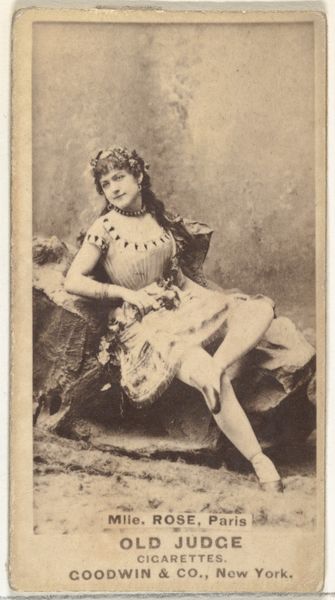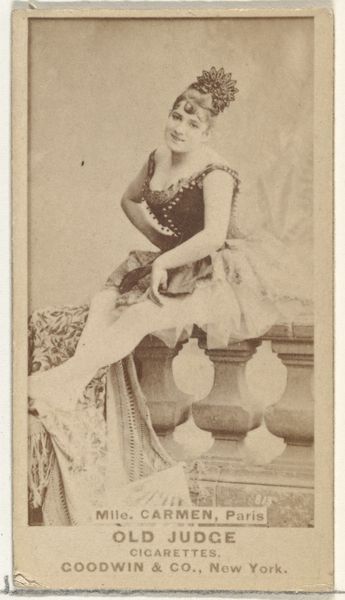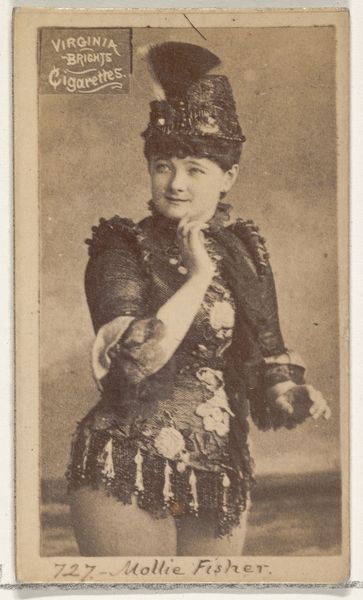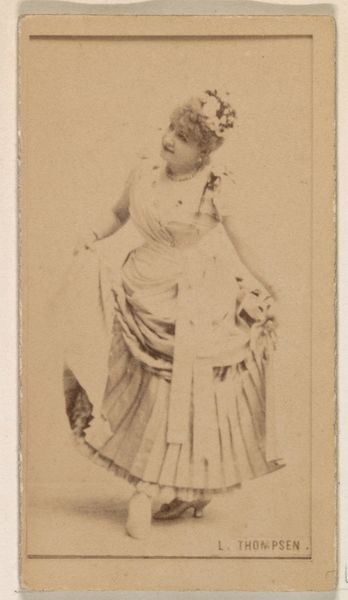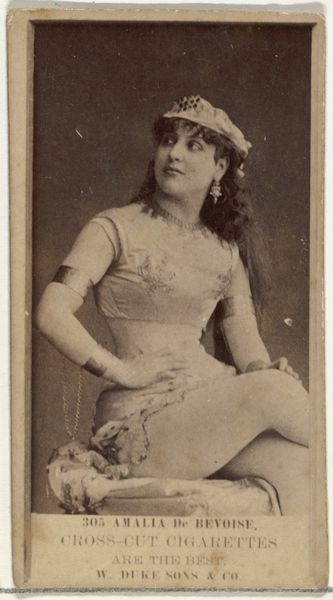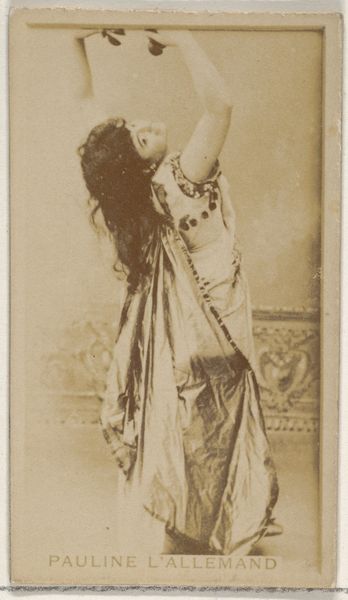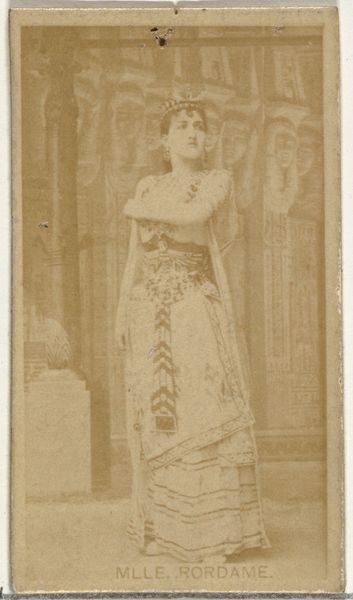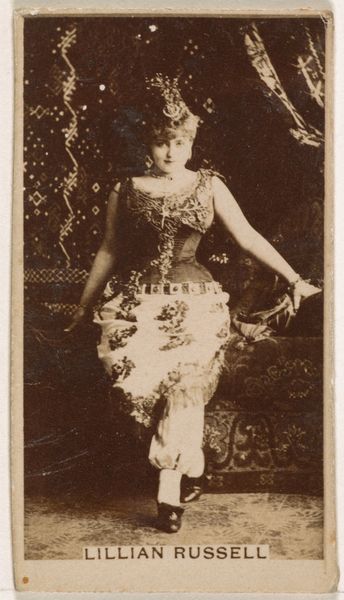
Dimensions: height 85 mm, width 51 mm
Copyright: Rijks Museum: Open Domain
Editor: So, this is "Portret van Anna Maria Strandberg" by Gösta Florman, dated between 1870 and 1885. It's a photograph housed here at the Rijksmuseum. I find her expression so captivating, almost theatrical, but with a delicate vulnerability. How do you interpret this work within its historical context? Curator: This piece beautifully exemplifies the rising popularity of staged portraiture in the late 19th century. Consider how photography, still a relatively new medium, was attempting to assert its artistic legitimacy. Florman's approach suggests an intentional nod to painting, appropriating romanticized ideals. What societal factors might have driven this desire to elevate photography? Editor: Maybe it was a way for photography to be seen as more than just a recording tool – a genuine art form, portraying beauty and idealization. The embellishments feel quite performative though; how much do you think her persona as an actor might shape its public reception? Curator: Precisely. The sitter's profession undeniably shapes our reading. She's presented almost as a character, adorned with the star-covered fabric, hinting at stardom. Think about the burgeoning entertainment industry at the time; theatricality became increasingly public, which, in turn, fueled societal aspirations for glamour. Could this image function as a form of publicity or a constructed persona, blurring private identity with public image? Editor: That's fascinating! It prompts us to question how people were choosing to represent themselves, and how that intersects with public perception. Curator: Indeed. And it underscores the dynamic interplay between art, commerce, and social identity in shaping the cultural landscape. We see photography being used not just to record, but also to construct a certain kind of social currency. Editor: I never considered the economic drivers behind romantic portraiture, how celebrity and photographic identity could become linked to consumer culture! Curator: Precisely! Understanding the socio-political and economic factors illuminates not only the artist’s intentions but also the work’s significance as a cultural artifact.
Comments
No comments
Be the first to comment and join the conversation on the ultimate creative platform.

